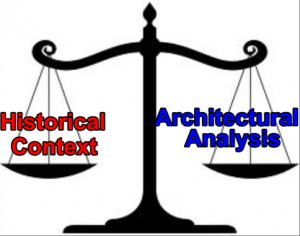By Matthew Reeves
For our internship, Natalie and I were tasked to research local historic buildings and write about them. The individual entries are going to aggregated and published in the revised version of A Place in Time, a guide to historic buildings in Kansas City. Beyond the research, which I’ve documented in previous posts, there’s the difficult task of writing the entries. This post will walk through the entry writing process, following my decision making process for striking a balance between historical information and architectural analysis.
Most writers — not just HistoryMakers — should start out by considering their audience. For the revised A Place in Time, our assumed audience is the general public. That phrase sounds good, but what does it mean? What information should we assume our reader will already know? We certainly don’t want to come off as condescending, but at the same time we don’t want to alienate readers by assuming that they are familiar with local history or architectural terms. So, writing for a general audience, I tried to excise all jargon from my entries, sometimes using less precise words; after all, it’s much more important to convey the appropriate idea than it is to show off a huge vocabulary. We also provided brief introductions and historical background when needed.
Finally, as a book on the history of architecture, we had to decide how to split up each entry between historical information and architectural analysis. Each entry was like a cocktail, and we had to find a reasonable blend of historical and architectural information for each entry. While I generally tried to split the information evenly, the decision varied for each site. Some buildings, like Notre Dame de Sion’s Midtown campus, were connected to compelling local stories like the Greenlease Kidnapping. Naturally, that story plays a part in the Sion entry. Other buildings were much more architecturally interesting, or maybe lacked a notable historical anecdote. In those cases, the entry focused on architectural description.
Ultimately, our authorial choices reflected the needs of our presumed audience and the strengths of each particular site. Or, at least, that’s the hope!


